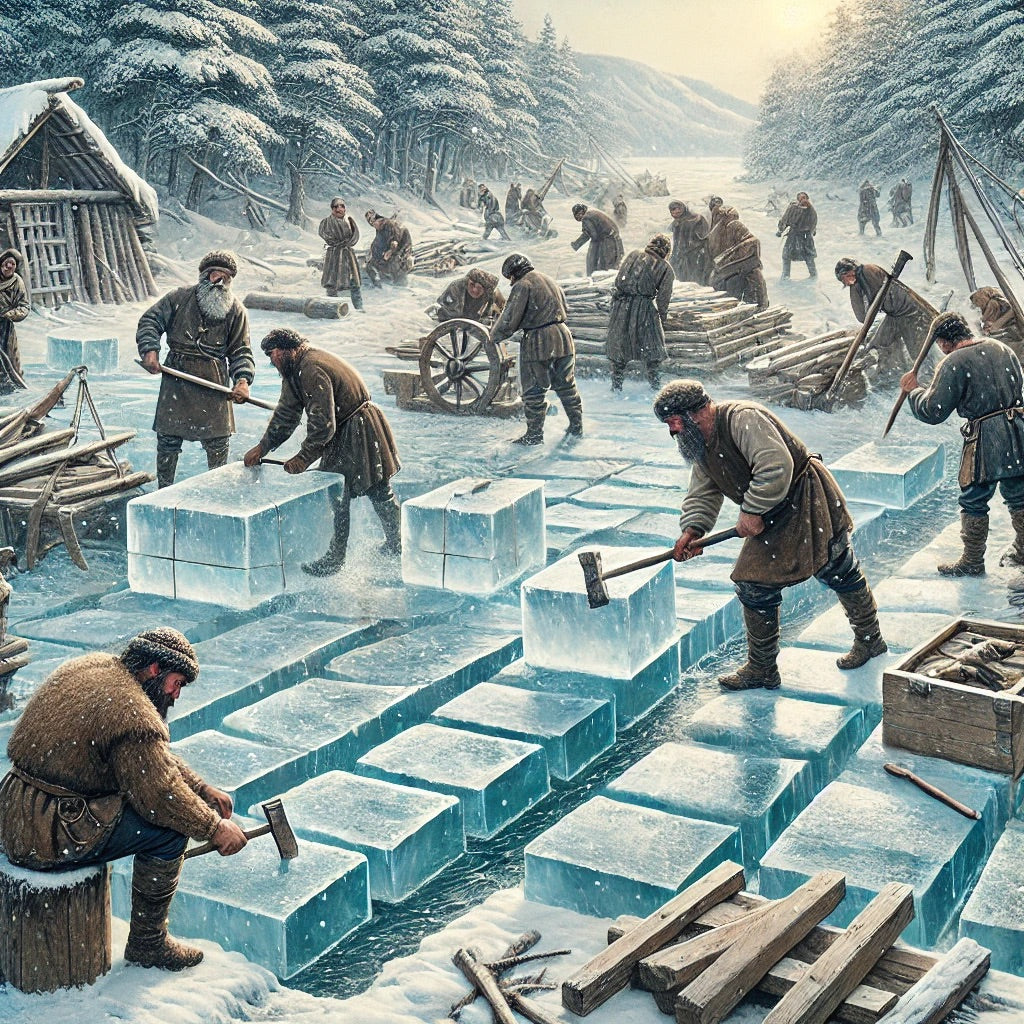The harvesting of ice from lakes and ponds has a long history, dating back to centuries before mechanical refrigeration existed. This natural ice harvesting became particularly important during the 19th century, when it was an essential part of the ice trade that delivered ice to homes, businesses, and far-flung regions. Here’s how ice was harvested from lakes and ponds historically:
Timing the Harvest
The process of ice harvesting typically took place in the winter months when lakes and ponds were frozen over with thick layers of ice. The best time to harvest ice was when it reached a thickness of at least 8 to 12 inches, which was strong enough to support the weight of workers and equipment. This usually occurred in mid-winter, from December to February, depending on the region’s climate.
Preparing the Ice Field
Once the ice had thickened sufficiently, the process began with clearing the surface of the ice of snow. This was important because snow acted as an insulator, slowing down the freezing process and creating uneven layers of ice. Workers used horse-drawn plows or large scrapers to remove the snow and expose the ice underneath. A smooth, flat ice surface was ideal for cutting and harvesting.
Cutting the Ice
In the early days of ice harvesting, workers used hand tools like saws and chisels to cut large blocks of ice from the frozen surface. They would begin by scoring the ice with long, straight lines, creating a grid pattern on the lake. These lines were cut deeper using ice saws, which were long, sharp-toothed saws specifically designed for cutting ice.
By the 19th century, ice harvesting became more efficient with the introduction of horse-drawn ice plows. These plows were equipped with metal blades that cut deep grooves into the ice, making it easier to separate the blocks. Once the grid was cut, the blocks of ice, typically measuring about 2 to 4 feet in length and width, were broken free using ice-breaking tools or bars. The blocks were then floated to the edges of the lake or pond.
Moving the Ice
Once the blocks of ice were cut and broken free, they were maneuvered through narrow channels that were often cut into the ice. These channels acted as pathways to float the ice toward the shore, where it could be more easily loaded and transported. Workers used large hooks called “ice pikes” or “ice tongs” to move and guide the ice blocks along these channels.
At the shore, teams of workers would use sleds or wagons pulled by horses to transport the ice blocks to nearby icehouses or storage facilities. In some cases, ice would be loaded directly onto barges or trains for transportation to more distant markets.
Storage and Insulation
Once the ice was harvested, it needed to be stored in a way that would preserve it for months or even years. Ice was typically stored in large, insulated icehouses located near lakes and ponds. These buildings were designed to keep ice cold even during the warmer months. Icehouses were built with thick walls made of wood, stone, or brick, and the ice was insulated with layers of sawdust, straw, or hay to prevent it from melting.
In commercial icehouses, workers would stack the blocks of ice in large piles, with each layer separated by sawdust. The insulation and thick layers of ice helped maintain a cool temperature, allowing the ice to last well into the summer months.
The Ice Trade
During the 19th century, particularly in the northeastern United States, ice harvesting became a major industry. The ice was shipped to cities, where it was used for refrigeration in homes and businesses. The demand for ice grew so much that large companies, like those run by Frederic Tudor (the “Ice King”), developed international ice trade routes. Tudor and other entrepreneurs shipped ice to the southern U.S., the Caribbean, and even as far as India.
The ice harvesting industry continued to thrive until the early 20th century, when the development of mechanical refrigeration began to replace the need for natural ice. However, before the advent of refrigeration, ice harvesting from lakes and ponds was a crucial part of life, ensuring that fresh food could be preserved and cold beverages could be enjoyed year-round.



